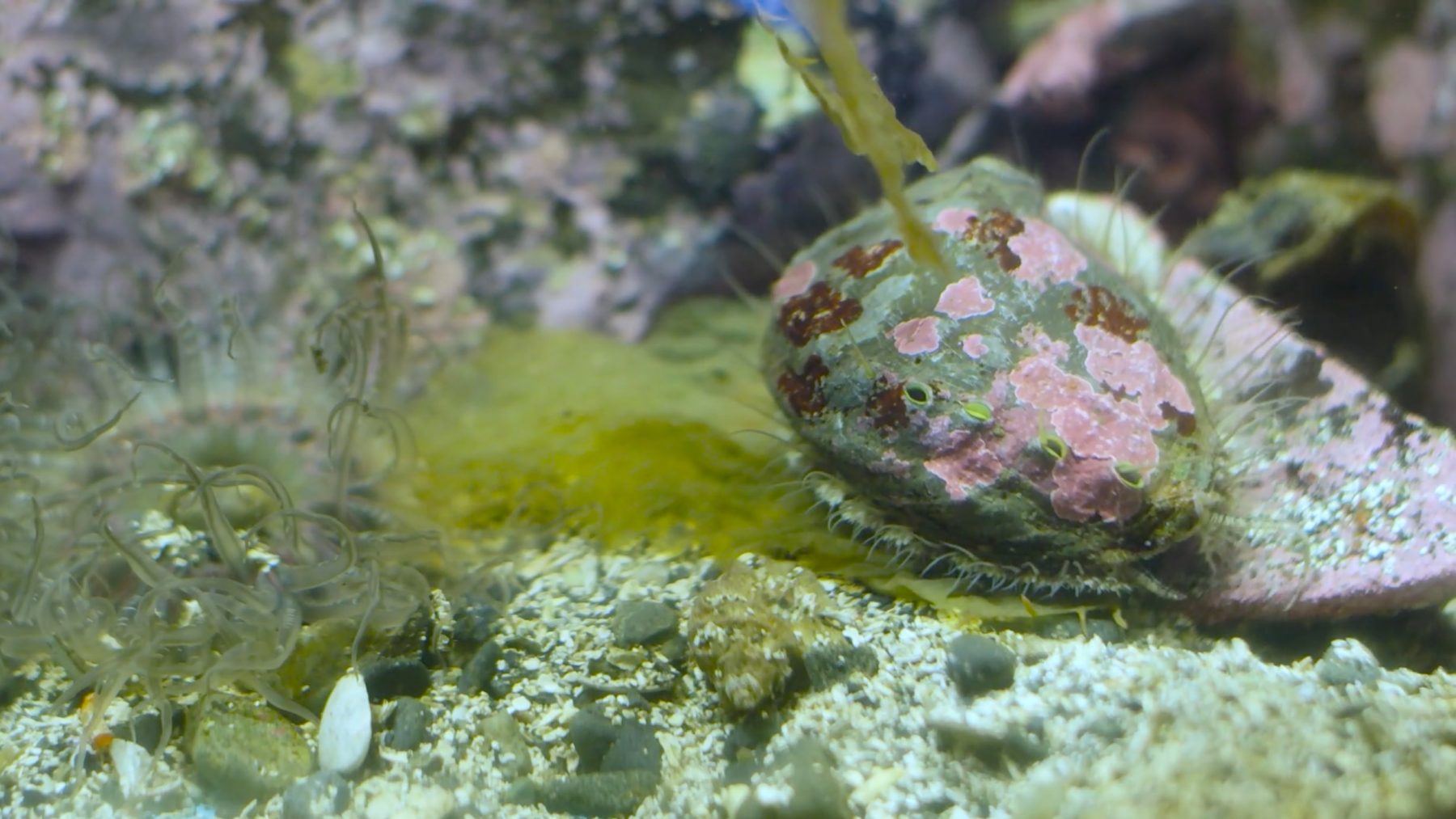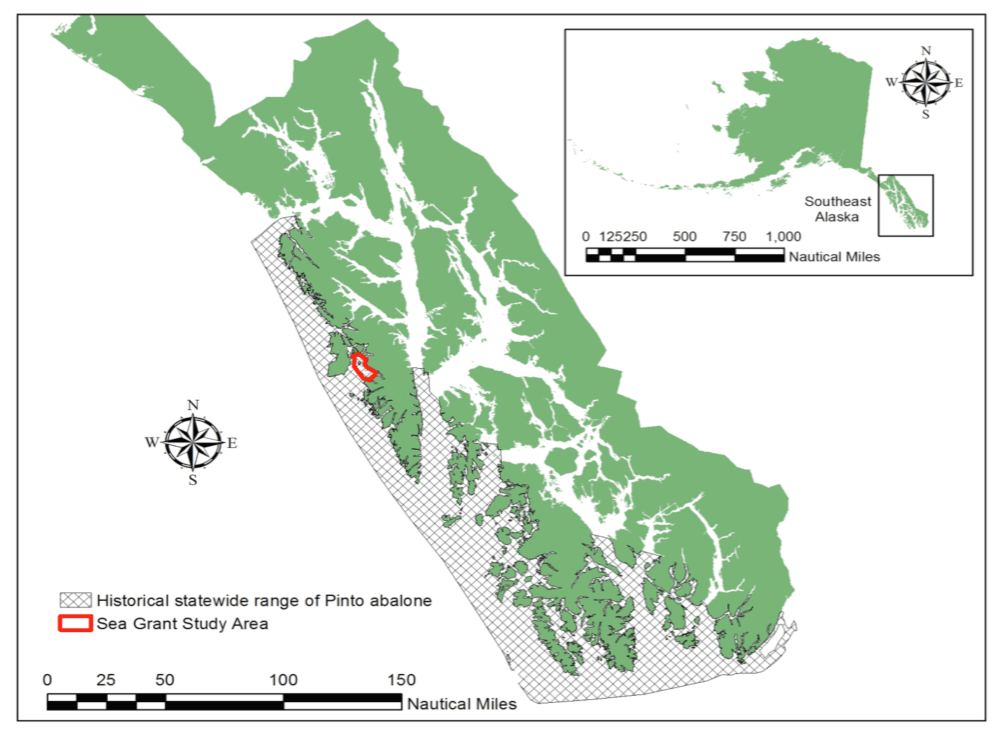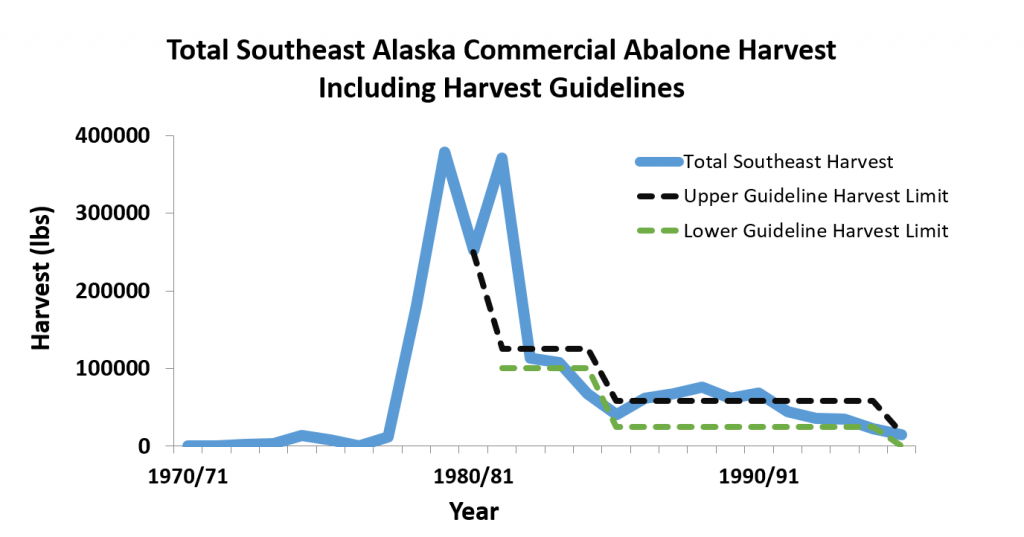
Research Questions
-
What is the size class structure of abalone aggregations?
-
Are local aggregations of pinto abalone in sufficient densities for fertilization success?
-
Is there evidence for successful recruitment of juvenile abalone?
Commercial harvest of pinto abalone throughout Southeast Alaska declined rapidly prior to the fishery closure in 1996. In addition, regional sea otter populations have rebounded in recent decades, substantially increasing predation pressure on abalone. A historical lack of population assessments at this northern edge of the species’ range was cited in the 2014 decision by the National Marine Fisheries Service as a reason to not list pinto abalone under the Endangered Species Act. PhD Student Taylor White is continuing this long-term monitoring project and research into Southeast Alaska abalone populations through the University of California Santa Cruz.

fullscreen

fullscreen
